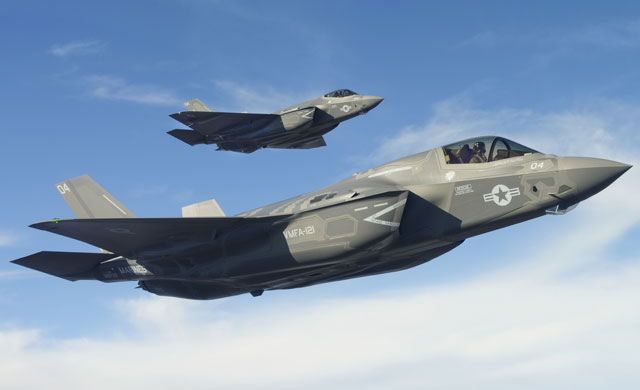The Pentagon’s F-35 Joint Program Office (JPO) has halted the development of an alternative BAE Systems-built helmet mounted display system (HMDS) for the stealthy Lockheed Martin-manufactured Joint Strike Fighter.
“The F-35 Joint Program Office has decided to stop the development of an alternate helmet and focus solely on bringing the ‘Gen 2’ helmet – now being used in testing and training – up to a fully compliant ‘Gen 3’ standard,” the programme office says.
Lorraine Martin, Lockheed’s executive vice president for the F-35 programme, says that the JPO decision is a sign of confidence in the original helmet design. “The government's decision to proceed exclusively with the principle helmet is indicative of their confidence in the helmet's performance and the successful resolution of previously identified technical challenges,” she says.
|
| Lockheed Martin |
The JPO says that over the past two years the programme and Lockheed have used a “disciplined systems engineering approach” and dedicated helmet flight testing to address problems with the existing Vision Systems International HMDS, which was developed as a collaboration between Rockwell Collins and Elbit Systems. Improvements to the existing Gen 2 helmet are being incorporated into the production line.
“The Gen 2 helmet F-35 pilots currently use will meet needs for the Marine Corps to declare Initial Operational Capability in July 2015, and the “Gen 3” helmet – to be introduced to the fleet in low rate initial production lot 7 in 2016 – will meet program requirements to complete test and development in 2017,” the F-35 JPO says. “The Gen 3 helmet will include an improved night vision camera, new liquid-crystal displays (LCD), automated alignment and software improvements.”
The JPO asserts that running the alternative helmet programme, which was started in 2011, has yielded financial savings for the US government. “The cost guarantee made by the Lockheed Martin/Rockwell Collins/Elbit team resulted in a reduction of 12% from the previous cost for the helmet system,” the JPO says. “Additionally, deciding to down select to the Gen 2/3 helmet now will avoid future cost of $45 million required to completely mature the BAE helmet.”
BAE Systems officials expressed their disappointment."We are disappointed at today’s decision by Lockheed Martin and the Joint Strike Fighter Joint Program Office to discontinue the pursuit of a second helmet for the F-35 aircraft," the company says.
Source: Flight International

















